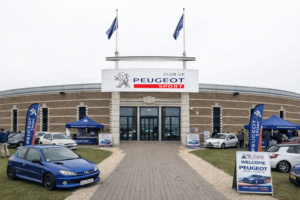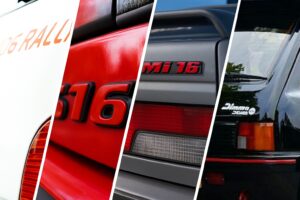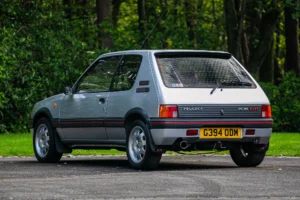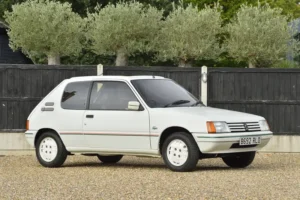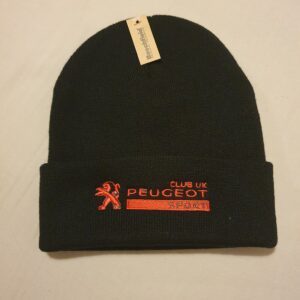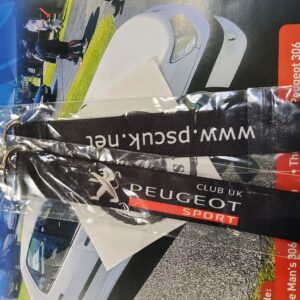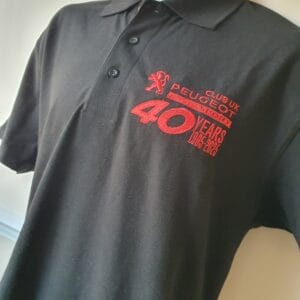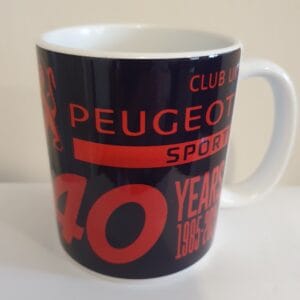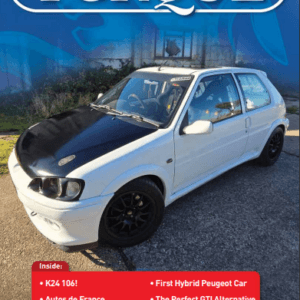
| Overview | |
| Manufacturer | Peugeot |
| Also called | Peugeot Coupé |
| Production | 1995–2004 (France, United Kingdom) 1996–2008 (Egypt) 1997–2003 (Italy, coupé) |
| Assembly | Sochaux, France (Sochaux Plant) Ryton, United Kingdom (Ryton Plant) Val di Sangro, Italy Cairo, Egypt (AAV) Iran٫ Tehran(IKCO) |
| Designer | Laurent Rossi (sedan) (1991) Davide Arcangeli and Lorenzo Ramaciotti at Pininfarina (coupé) |
| Body and chassis | |
| Class | Large family car (D) |
| Body style | 4-door saloon 5-door estate 2-door coupé |
| Layout | Front-engine, front-wheel-drive |
| Related | Citroën Xantia |
| Powertrain | |
| Engine | 1.6 L I4 (petrol) 1.8 L I4 (petrol) 2.0 L I4 (petrol) 2.0 L I4 turbo (petrol) 2.2 L I4 (petrol) 2.9 L V6 (petrol) 1.9 L I4 (diesel) 2.0 L I4 (diesel) 2.1 L I4 (diesel) 2.2 L I4 (diesel) |
| Transmission | 4-speed automatic 5-speed manual |
| Dimensions | |
| Wheelbase | 2,700 mm (106.3 in) |
| Length | 4,555 mm (179.3 in) (sedan) 4,736 mm (186.5 in) (wagon) 4,615 mm (181.7 in) (coupé) |
| Width | 1,764 mm (69.4 in) (sedan) 1,760 mm (69.3 in) (wagon) 1,781 mm (70.1 in) (coupé) |
| Height | 1,396 mm (55.0 in) |
The Peugeot 406 is a large family car that was produced between 1995 and 2004. Available in saloon, estate and coupé body styles with a choice of petrol or turbodiesel engines, the 406 replaced the Peugeot 405 in Peugeot’s line up, and was itself replaced by the Peugeot 407. It used the same platform as the Citroën Xantia, though without that car’s sophisticated hydro pneumatic suspension system.
The styling of the 406 is heavily influenced by its predecessor, the 405, which began to be phased out from the 406’s launch in September 1995, and eventually finished production in Europe in 1997, when the last estate models were discontinued. United Kingdom sales of the 406 began in February 1996. Initially, the car was available with 1.8 L and 2.0 L petrol and 1.9 L turbodiesel engines, followed by a turbocharged 2.0 petrol, 2.9 (2946cc, badged as a 3.0) V6 petrol, and 110bhp 2.1 L turbodiesel. The diesel versions were very popular, and the 406 became one of Europe’s best selling diesel powered cars.
The two door coupé, launched at the 1996 Paris Motor Show, was both designed and manufactured by Italian design studio Pininfarina, with choices of a 2.0 L four cylinder engine or a 3.0 L V6, and from 2001, a 2.2 L HDi diesel engine. On later models, a 2.2 L petrol engine was available. A total of 107,633 coupés were made. The design was originally offered to Fiat by Pininfarina in about 1990, only for Fiat to reject the design and design its own coupe.
For its final year on sale in the United Kingdom, the model was simply called the Peugeot Coupé, with the 406 branding dropped from the name. The 406 was notably successful in the United Kingdom, having broken into the country’s key fleet sales market, with a high percentage of units becoming company cars and taxis. In August 2002, a Peugeot 406 HDi set the world record for the longest distance driven on a single tank of fuel. The car travelled across Australia between Melbourne to Rockhampton, with a total distance of 2,348km.
The facelifted 406 sedan was introduced in February 1999, and safety, strength and speed enhancements resulted in improved Euro NCAP performance. Where the old 406 had one star and a struck off star, the post facelift models gained three stars. The changes included the new and improved EW/DW Engine Family HDI with greater power, torque and fuel efficiency along with increased refinement, making it comparatively quiet for a diesel. A downside was an increase in the car’s insurance group from 9 to 12
The exterior look was amended as the 406 featured more pronounced ribs, clear headlights, chrome trim and a new honeycomb grill. The rear lights were finished in red with a strip of the car’s paint colour across the centre. The interior was also redesigned to improve comfort and space. New equipment included automated digital climate control/air conditioning on most models except the most basic and a multi-function display for warning messages, trip computer, radio and external temperature. There was a more extensive use of wooden trim, better quality plastics, including soft touch plastics, and in addition some models received electrically folding mirrors, with automatic headlights and wipers.
The top of the range Executive model was specified a ten speaker JBL sound system, electrically adjusted and heated leather seats, a memory position for the seats and mirrors, headlight washer jets, a rear sun blind, thicker carpeting, lights in the sun visors, satellite navigation and ambient lighting.






